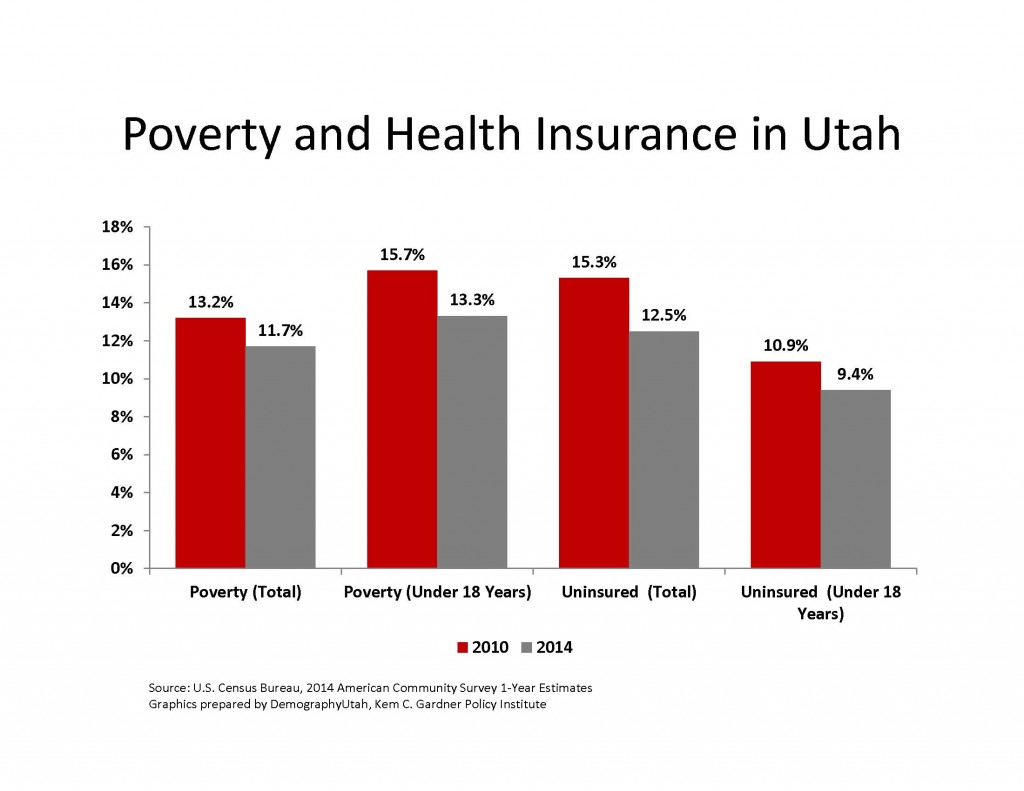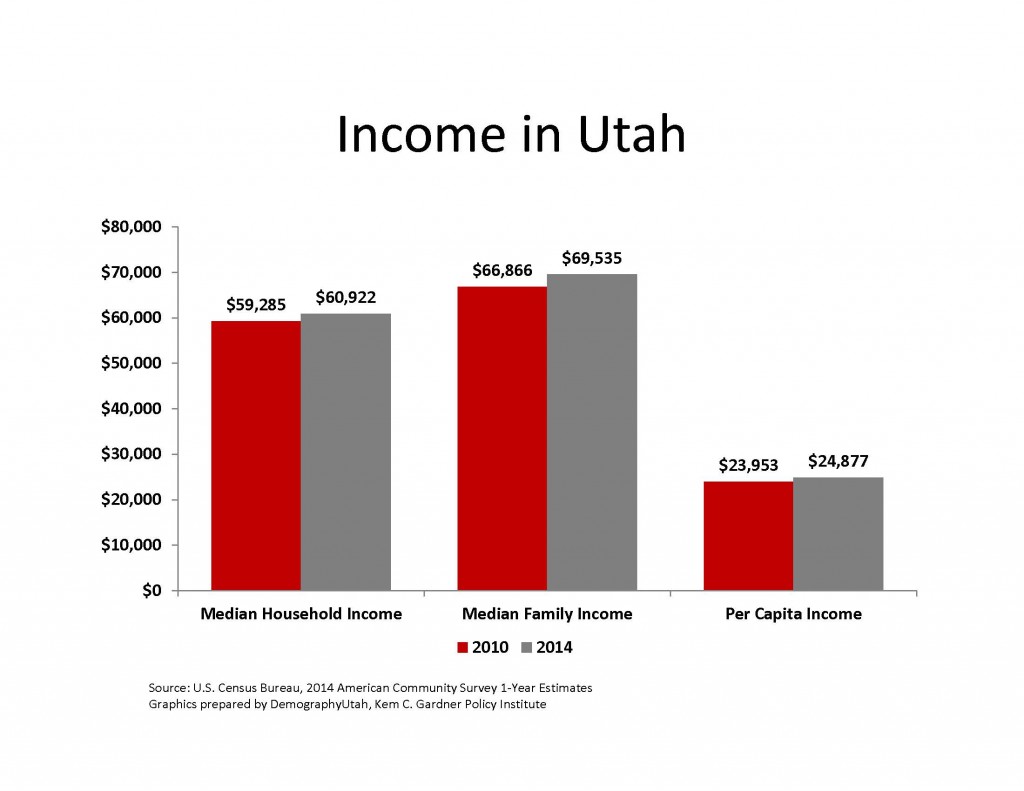Blog Post
Insight: New Evidence Demonstrates Utah Continues to Change
By: Dr. Pamela Perlich, PhD
By: Effie Van Noy
Today, the U.S. Census Bureau released the 2014 American Community Survey 1-year estimates. Utah continues to be the youngest state in the nation, but half of the population is now older than 30.5 years, with median age continuing to rise from 29.2 in 2010. This is the combined effect of falling births and birthrates as well as rising ages for marriage and childbearing. According to these data, Utah women had children at a rate of 70 per 1,000 women 15 to 50 years old (who had a birth in the past 12 months) in 2014, down from 2010. This compares to a rate of 52 per 1,000 nationally in 2014, also down since 2010. As the recovery has proceeded, it would appear the decline in births in Utah and across the nation have finally reversed. Utah consistently has among the largest household sizes in the nation. Average household size in Utah is estimated to be 3.16 in 2014, which is an increase from the 2010 level of 3.10. This represents a reversal of a longer term trend, and is further evidence of the severity of the Great Recession, which has delayed household formation of young adults and has resulted in “doubling up” of multiple households. The same trend can be seen nationally, although to a lesser extent, with average household size increasing to 2.65 in 2014, as compared to 2.63 in 2010. The average family size was 3.65 in 2014, an increase from 3.57 in 2010. The average family size in the nation was 3.26 in 2014. Immigration flows to Utah and the nation have declined significantly with the onset of the Great Recession. Source regions of immigrants to Utah have also shifted as the recovery has advanced. These estimates indicate that Utah’s foreign born population increased to 249,917 people, or 8.5 percent of the Utah population in 2014. This is an increase from 2010 when this group was 222,638 persons or eight percent of the total population. Our major source region continues to be Latin America (59 percent), but this share has decreased. In contrast, immigrants from Asia increased to over one fifth (22 percent) of Utah’s foreign born population, up from an estimated 17 percent in 2010. Evidence of Utah’s economic recovery is seen in increasing median income, health insurance coverage and declines in poverty rates. The median household income in 2014 in Utah was $60,922, the 14th highest in the nation and an increase from a 2010 median household income of $59,285. This is in contrast to the declines in the national median household income, which decreased from $53,836 in 2010 to $53,657 in 2014. There was a decrease in the percent of people in Utah without health insurance coverage from 15.3 percent in 2010 to 12.5 percent in 2014. For children under 18 years the percentage also decreased from 10.9 percent in 2010 to 9.4 percent in 2014. People in poverty decreased from 13.2 percent in 2010 to 11.7 percent in 2014. Children under 18 years in poverty also decreased from 15.7 percent in 2010 to 13.3 percent in 2010. Families in poverty also decreased from 9.7 percent in 2010 to 8.5 percent in 2014. Families with a female householder, but no husband present with children under 5 years had the largest percentage in poverty with 49.5 percent. We are always anxious for the release of new data sets and what they tell us about our changing communities. While there is much more that we could share about this new release, we will leave you with one more view of Utah. We continue to become more digitally connected. In 2014, 92 percent of households had a computer and 82 percent had a broadband Internet subscription, an increase from 2013 for variables, (91 percent and 80 percent). Dr. Pamela Perlich is the director of demographic research at the Kem C. Gardner Policy Institute. Effie Van Noy is a research analyst at the Kem C. Gardner Policy Institute and serves as the Utah State Data Center coordinator. [i] Survey data was collected each month and these are combined to a set of period estimates for 2014. While the survey is statewide, sample sizes limit the reporting of data to areas with populations of at least 65,000.


